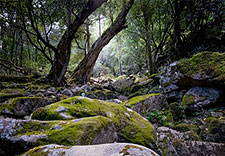NAATI Certified Translation for Rocky River
Certified translation examples from Sydney Translation Services.
Driver License
Birth Certificate
Passport Translation
Marriage Certificate
Death Certificate
Divorce Certificate
Degree Certificate
No-Criminal Record
The Gupapuyngu Language

- Unique Phonology: Gupapuyngu, a Yolŋu Matha language of North-East Arnhem Land, features a rich phonological system with distinct sounds that are uncommon in many other languages. Translators must be attuned to the specific sounds and pronunciations to accurately convey meaning, especially when dealing with oral histories or culturally significant texts.
- Oral Tradition: Gupapuyngu is traditionally an oral language, with written forms developed more recently. As such, much of the translation work involves transcribing spoken language, which requires a deep understanding of cultural context and oral storytelling techniques.
- Contextual Sensitivity: Many words and phrases in Gupapuyngu are deeply tied to cultural practices and the local environment. Translators need to ensure that these cultural nuances are preserved in the translation, especially when dealing with ceremonial or traditional knowledge, where mistranslation could lead to significant misinterpretations.
- Translating Legal and Educational Documents: Gupapuyngu is increasingly used in legal and educational contexts, especially in the Northern Territory. Translators working on these types of documents need to ensure that the correct legal and academic terminology is employed, respecting both the traditional language structure and the specific requirements of official communication.
About Rocky River
 Rocky River is a locality in northern New South Wales, Australia near the town of Uralla on the Northern Tablelands plateau. About two kilometres west of Uralla, was the gold mining area and associated village also called Rocky River. In 1851 W.F. Buchanan and J. Lucas reported to the Maitland office that gold had been found at Rocky River. This announcement was made official on 7 October 1851, by Commissioner Massie, and started a rush to the area.
Rocky River is a locality in northern New South Wales, Australia near the town of Uralla on the Northern Tablelands plateau. About two kilometres west of Uralla, was the gold mining area and associated village also called Rocky River. In 1851 W.F. Buchanan and J. Lucas reported to the Maitland office that gold had been found at Rocky River. This announcement was made official on 7 October 1851, by Commissioner Massie, and started a rush to the area.
In 1852 the first licenses to prospect were taken out. During October 1852, the Windeyer Brothers discovered the first payable gold on the field washing about five ounces of gold in less than a week. This caused further interest and by the end of 1852 the goldfield's population rose to around 150 persons. At this time it was all alluvial mining, confined to the rivers and creeks. Panning and cradling were the usual methods of extracting the gold from the washdirt.
The census carried out between the 3 and 5 June 1854 reported that there were 86 tents on the field and a population of 350, comprising 193 males, 58 females and 99 children. Until 1856 Rocky River gold field was small and of comparatively no importance to the remainder of the country. In February 1856 John Jones discovered a few specks of gold lying in cartwheel tracks on what is now known as Mt Jones. Jones's discovery then led to the sinking of deep-lead shafts in the vicinity and another rush into the area.
Other Gupapuyngu Translation Service Locations
Mount Victoria Gupapuyngu Translator, Newnes Gupapuyngu Translator, Niangala Gupapuyngu Translator, Stannifer Gupapuyngu Translator, Stannum Gupapuyngu Translator, Sunny Corner Gupapuyngu Translator.




 Rocky River is a locality in northern New South Wales, Australia near the town of Uralla on the Northern Tablelands plateau. About two kilometres west of Uralla, was the gold mining area and associated village also called Rocky River. In 1851 W.F. Buchanan and J. Lucas reported to the Maitland office that gold had been found at Rocky River. This announcement was made official on 7 October 1851, by Commissioner Massie, and started a rush to the area.
Rocky River is a locality in northern New South Wales, Australia near the town of Uralla on the Northern Tablelands plateau. About two kilometres west of Uralla, was the gold mining area and associated village also called Rocky River. In 1851 W.F. Buchanan and J. Lucas reported to the Maitland office that gold had been found at Rocky River. This announcement was made official on 7 October 1851, by Commissioner Massie, and started a rush to the area.